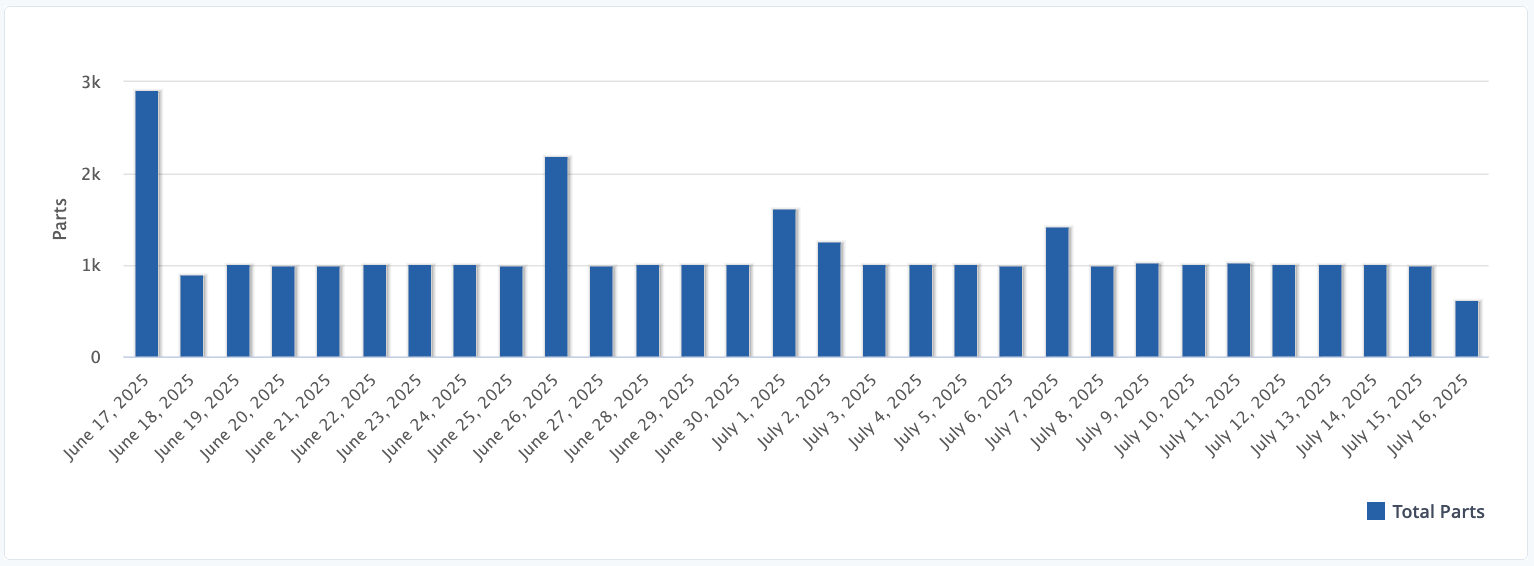Building and maintaining a scalable manufacturing organization is hard. It’s critical to remain innovative and continuously find ways to be more productive. To improve your processes, it’s important to have the proper tools in place to measure results, and using machine data through an IoT initiative is a foundational step to accomplish this. There are a few approaches you can take when it comes to implementing IoT for your organization — some with larger tradeoffs than others which we will explore in this article — but first, let’s see what’s involved:
The Stack
First, you need to get data off of your equipment. This can be done using sensors, or with most equipment built in the last 15 years, through APIs made available by the machine builder. Each control (and sometimes each make/model/family of a machine) has a different mechanism for getting data. This library of connectors alone can be a huge investment - in money to acquire existing solutions, in time to build them yourself, and in time to set up and configure them.
Next, all of this data needs to be stored somewhere in a format that is easily queryable. Now, what does that mean? It really depends on your short and longterm goals. Looking at the raw data is one thing, but being able to reason about it across multiple pieces of equipment or even across facilities over long stretches of time is another. Whenever you stop thinking beyond the first step, you’re very likely going to have to start over when a new requirement comes up. And this will cost more precious time and money.
Having a large pool of data can sometimes feel like the end goal, but the reason why you’d take on an IoT project is to provide actionable insights into your operation so transformative changes can be made and measured. You can buy or build applications that allow you to make use of your data, but in either case you’ll likely need to connect the pieces together yourself if they’re not built to work together out-of-the-box.
Each of these systems also need to be built with security, scalability, and resiliency in mind; so as you decide to add more equipment or have new ideas for how to act on the data, you don’t have to start over. This is an ongoing effort, but if it’s done right — and with the right tools and systems — it can build a competitive moat around your business. The key is to choose systems that offer quick time-to-value and allow for new ideas to be added on later.
Do it Yourself
Builder beware
Setting out on your digital transformation journey with the right plan in place is key, but the truth is only 30 percent of pilots end up reaching scale across an entire organization according to McKinsey. The vast majority take over a year to develop and a significant portion of those can take 2 years or longer. From setting goals, to building a software development team, to implementing and rolling out the solution — it all adds up. So much of that time can be spent realizing the value of the solution but instead adds up to significant opportunity cost.
Building on a Generic Platform
FYI, It’s still DIY...
A decent portion of the effort can be offset by taking advantage of an IoT platform that provides the infrastructure, scalability, resiliency, and security necessary for your project “out-of-the-box”. Most IoT platforms are intentionally generic, offering a solid base for nearly any IoT initiative, whether it be monitoring moving trains to hotel elevators. But in many ways, these platforms still result in having to do a lot of it yourself.
With a generic IoT platform, you are still required to build applications on top of the platform to fit your business needs. In some cases, the platform won’t include the connectors; so, getting the data off of the machines and transforming it into a consistent model across all of your equipment may be left to you as well. Taking advantage of a platform can reduce the effort significantly, but you’re still looking at a year or more to see any measurable result.
Want to See the Platform in Action?
Extending a Vertically Focused Platform
Out-of-the-box apps and extensible for building your competitive advantage
Choosing a platform that not only provides an end-to-end solution for your vertical but also provides the ability to extend it with additional applications specific to your business, will provide a nearly immediate time-to-value and justify further investment in the initiative. Since such platforms are focused on your specific industry, they can provide all necessary connectors, automatically transforming the data into consistent forms across your entire organization while also providing tools for layering in operational data (job standards, reasons for downtime like maintenance, available staffing, etc) to make the machine data more meaningful.
Each industry has different nomenclature, relevant metrics, and business processes that require distinct data models which don’t always overlap. Generic IoT platforms can provide a base, but anything specific to your industry will have to be bolted on — often by you. Take discrete manufacturing as an example, there’s tooling, ever-changing jobs and their standards, setups and teardowns, and human operators to account for. A vertical platform takes all of this into account with data models and user interfaces that are tailor-made for each data consumer and producer within the organization.
For connectivity, machines come with controls like FANUC, Heidenhain, Siemens, Mitsubishi, HAAS, and more. These controls have their own proprietary protocols while some other machines support broader standards like OPC-UA, Modbus, MTConnect, etc. There are continuing efforts to unify these mechanisms, but it will take years to get there. And don’t forget about all the equipment you already have on your floor that will be in operation well into the future. Since vertical IoT platforms are focused on your specific industry, they can provide support for all of this equipment out-of-the-box.
These vertical IoT platforms are truly extensible systems where many stakeholders can build upon and either share or sell their findings. The digital transformation journey is just that - a journey. Crawl, walk, run. There are a lot of gains that can be realized along the way.
Final Thoughts
Starting the digital transformation of your organization can be daunting, and going in blind to all of the challenges that may lie ahead is setting yourself up for failure. It’s important to focus on the parts that will help you build a better business while leveraging the solid foundation that a vertically-focused platform can provide. While there are a number of platforms on the market, the ones that focus on your industry and provide end-to-end solutions that can be extended with your business’ specific use cases will provide the fastest time-to-value and let you focus on building your own competitive advantage.
Download our white paper: "Reinventing the IoT Platform for Discrete Manufacturers."


.png?width=1960&height=1300&name=01_comp_Downtime-%26-Quality_laptop%20(1).png)












Comments